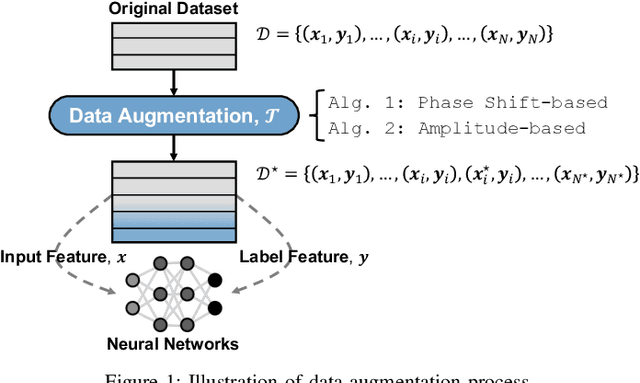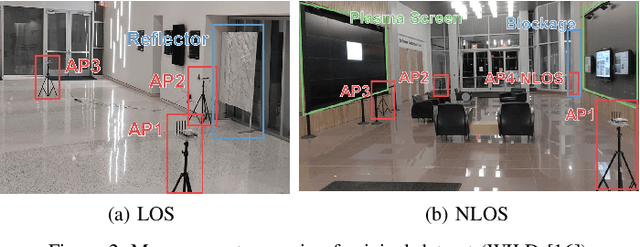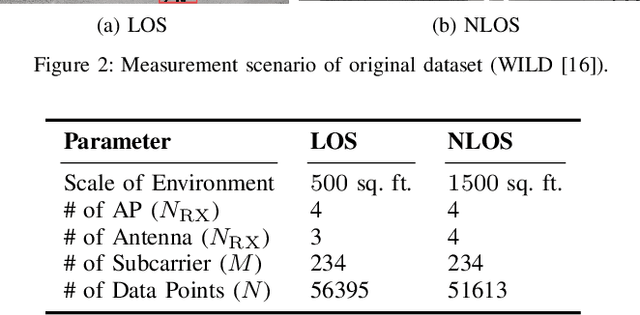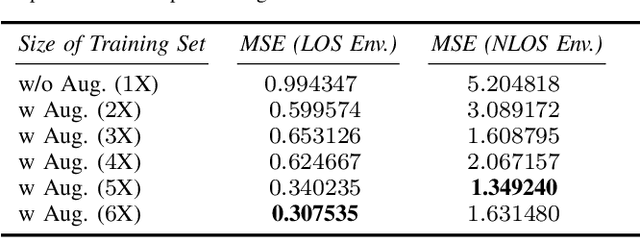Ju-Hyung Lee
On-Device LLM for Context-Aware Wi-Fi Roaming
May 07, 2025Abstract:Wireless roaming is a critical yet challenging task for maintaining seamless connectivity in dynamic mobile environments. Conventional threshold-based or heuristic schemes often fail, leading to either sticky or excessive handovers. We introduce the first cross-layer use of an on-device large language model (LLM): high-level reasoning in the application layer that issues real-time actions executed in the PHY/MAC stack. The LLM addresses two tasks: (i) context-aware AP selection, where structured prompts fuse environmental cues (e.g., location, time) to choose the best BSSID; and (ii) dynamic threshold adjustment, where the model adaptively decides when to roam. To satisfy the tight latency and resource budgets of edge hardware, we apply a suite of optimizations-chain-of-thought prompting, parameter-efficient fine-tuning, and quantization. Experiments on indoor and outdoor datasets show that our approach surpasses legacy heuristics and DRL baselines, achieving a strong balance between roaming stability and signal quality. These findings underscore the promise of application-layer LLM reasoning for lower-layer wireless control in future edge systems.
AutoBS: Autonomous Base Station Deployment Framework with Reinforcement Learning and Digital Twin Network
Feb 27, 2025Abstract:This paper introduces AutoBS, a reinforcement learning (RL)-based framework for optimal base station (BS) deployment in 6G networks. AutoBS leverages the Proximal Policy Optimization (PPO) algorithm and fast, site-specific pathloss predictions from PMNet to efficiently learn deployment strategies that balance coverage and capacity. Numerical results demonstrate that AutoBS achieves 95% for a single BS, and 90% for multiple BSs, of the capacity provided by exhaustive search methods while reducing inference time from hours to milliseconds, making it highly suitable for real-time applications. AutoBS offers a scalable and automated solution for large-scale 6G networks, addressing the challenges of dynamic environments with minimal computational overhead.
Integrating Pre-Trained Language Model with Physical Layer Communications
Feb 18, 2024



Abstract:The burgeoning field of on-device AI communication, where devices exchange information directly through embedded foundation models, such as language models (LMs), requires robust, efficient, and generalizable communication frameworks. However, integrating these frameworks with existing wireless systems and effectively managing noise and bit errors pose significant challenges. In this work, we introduce a practical on-device AI communication framework, integrated with physical layer (PHY) communication functions, demonstrated through its performance on a link-level simulator. Our framework incorporates end-to-end training with channel noise to enhance resilience, incorporates vector quantized variational autoencoders (VQ-VAE) for efficient and robust communication, and utilizes pre-trained encoder-decoder transformers for improved generalization capabilities. Simulations, across various communication scenarios, reveal that our framework achieves a 50% reduction in transmission size while demonstrating substantial generalization ability and noise robustness under standardized 3GPP channel models.
Interference-Aware Emergent Random Access Protocol for Downlink LEO Satellite Networks
Feb 04, 2024Abstract:In this article, we propose a multi-agent deep reinforcement learning (MADRL) framework to train a multiple access protocol for downlink low earth orbit (LEO) satellite networks. By improving the existing learned protocol, emergent random access channel (eRACH), our proposed method, coined centralized and compressed emergent signaling for eRACH (Ce2RACH), can mitigate inter-satellite interference by exchanging additional signaling messages jointly learned through the MADRL training process. Simulations demonstrate that Ce2RACH achieves up to 36.65% higher network throughput compared to eRACH, while the cost of signaling messages increase linearly with the number of users.
A Scalable and Generalizable Pathloss Map Prediction
Dec 06, 2023



Abstract:Large-scale channel prediction, i.e., estimation of the pathloss from geographical/morphological/building maps, is an essential component of wireless network planning. Ray tracing (RT)-based methods have been widely used for many years, but they require significant computational effort that may become prohibitive with the increased network densification and/or use of higher frequencies in B5G/6G systems. In this paper, we propose a data-driven, model-free pathloss map prediction (PMP) method, called PMNet. PMNet uses a supervised learning approach: it is trained on a limited amount of RT (or channel measurement) data and map data. Once trained, PMNet can predict pathloss over location with high accuracy (an RMSE level of $10^{-2}$) in a few milliseconds. We further extend PMNet by employing transfer learning (TL). TL allows PMNet to learn a new network scenario quickly (x5.6 faster training) and efficiently (using x4.5 less data) by transferring knowledge from a pre-trained model, while retaining accuracy. Our results demonstrate that PMNet is a scalable and generalizable ML-based PMP method, showing its potential to be used in several network optimization applications.
Handover Protocol Learning for LEO Satellite Networks: Access Delay and Collision Minimization
Oct 31, 2023



Abstract:This study presents a novel deep reinforcement learning (DRL)-based handover (HO) protocol, called DHO, specifically designed to address the persistent challenge of long propagation delays in low-Earth orbit (LEO) satellite networks' HO procedures. DHO skips the Measurement Report (MR) in the HO procedure by leveraging its predictive capabilities after being trained with a pre-determined LEO satellite orbital pattern. This simplification eliminates the propagation delay incurred during the MR phase, while still providing effective HO decisions. The proposed DHO outperforms the legacy HO protocol across diverse network conditions in terms of access delay, collision rate, and handover success rate, demonstrating the practical applicability of DHO in real-world networks. Furthermore, the study examines the trade-off between access delay and collision rate and also evaluates the training performance and convergence of DHO using various DRL algorithms.
Simple and Effective Augmentation Methods for CSI Based Indoor Localization
Nov 19, 2022



Abstract:Indoor localization is a challenging task. There is no robust and almost-universal approach, in contrast to outdoor environments where GPS is dominant. Recently, machine learning (ML) has emerged as the most promising approach for achieving accurate indoor localization, yet its main challenge is the requirement for large datasets to train the neural networks. The data collection procedure is costly and laborious as the procedure requires extensive measurements and labeling processes for different indoor environments. The situation can be improved by Data Augmentation (DA), which is a general framework to enlarge the datasets for ML, making ML systems more robust and increases their generalization capabilities. In this paper, we propose two simple yet surprisingly effective DA algorithms for channel state information (CSI) based indoor localization motivated by physical considerations. We show that the required number of measurements for a given accuracy requirement may be decreased by an order of magnitude. Specifically, we demonstrate the algorithms' effectiveness by experiments conducted with a measured indoor WiFi measurement dataset: as little as 10% of the original dataset size is enough to get the same performance of the original dataset. We also showed that, if we further augment the dataset with proposed techniques we get better test accuracy more than three-fold.
PMNet: Robust Pathloss Map Prediction via Supervised Learning
Nov 18, 2022Abstract:Pathloss prediction is an essential component of wireless network planning. While ray-tracing based methods have been successfully used for many years, they require significant computational effort that may become prohibitive with the increased network densification and/or use of higher frequencies in 5G/B5G (beyond 5 G) systems. In this paper, we propose and evaluate a data-driven and model-free pathloss prediction method, dubbed PMNet. This method uses a supervised learning approach: training a neural network (NN) with a limited amount of ray tracing (or channel measurement) data and map data and then predicting the pathloss over location with no ray tracing data with a high level of accuracy. Our proposed pathloss map prediction-oriented NN architecture, which is empowered by state-of-the-art computer vision techniques, outperforms other architectures that have been previously proposed (e.g., UNet, RadioUNet) in terms of accuracy while showing generalization capability. Moreover, PMNet trained on a 4-fold smaller dataset surpasses the other baselines (trained on a 4-fold larger dataset), corroborating the potential of PMNet.
Seq2Seq-SC: End-to-End Semantic Communication Systems with Pre-trained Language Model
Oct 27, 2022



Abstract:While semantic communication is expected to bring unprecedented communication efficiency in comparison to classical communication, many challenges must be resolved to realize its potential. In this work, we provide a realistic semantic network dubbed seq2seq-SC, which is compatible to 5G NR and can work with generalized text dataset utilizing pre-trained language model. We also utilize a performance metric (SBERT) which can accurately measure semantic similarity and show that seq2seq-SC achieves superior performance while extracting semantically meaningful information.
Learning Emergent Random Access Protocol for LEO Satellite Networks
Dec 03, 2021



Abstract:A mega-constellation of low-altitude earth orbit (LEO) satellites (SATs) are envisaged to provide a global coverage SAT network in beyond fifth-generation (5G) cellular systems. LEO SAT networks exhibit extremely long link distances of many users under time-varying SAT network topology. This makes existing multiple access protocols, such as random access channel (RACH) based cellular protocol designed for fixed terrestrial network topology, ill-suited. To overcome this issue, in this paper, we propose a novel grant-free random access solution for LEO SAT networks, dubbed emergent random access channel protocol (eRACH). In stark contrast to existing model-based and standardized protocols, eRACH is a model-free approach that emerges through interaction with the non-stationary network environment, using multi-agent deep reinforcement learning (MADRL). Furthermore, by exploiting known SAT orbiting patterns, eRACH does not require central coordination or additional communication across users, while training convergence is stabilized through the regular orbiting patterns. Compared to RACH, we show from various simulations that our proposed eRACH yields 54.6% higher average network throughput with around two times lower average access delay while achieving 0.989 Jain's fairness index.
 Add to Chrome
Add to Chrome Add to Firefox
Add to Firefox Add to Edge
Add to Edge